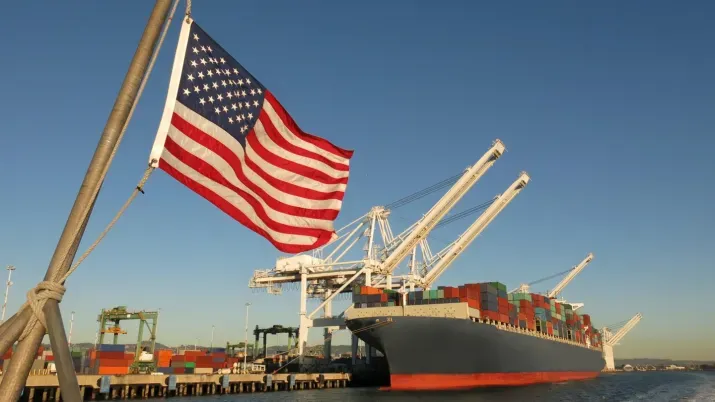Three conclusions from a chaotic week for markets
Last week was one of the most volatile on record. President Trump's announcement of a 90-day pause in reciprocal tariffs for every country bar China sparked one of the largest rallies in equity indices in recent history. Credit spreads followed suit with severe tightening across the board. Action in rates was incredibly erratic and warrants closer scrutiny. By the end of the week, risk assets had held on to some yet not all of their gains. Since “Liberation Day” on April 2, the CoCo, European high yield and US high yield indices are down 1.35%, 1.68% and 2.79% respectively, while 10-year US Treasuries (USTs) have lost 3.6%. As a result, with hedging a euro-denominated asset back to dollars currently adding around 210bp to its yield, the yield on the CoCo, European HY and US HY indices now stands at 8.1%, 8.51% and 8.54% respectively.
“Where do markets go from here?” has been the most common question in our recent interactions with clients. While volatility is likely to remain elevated for some time, we can draw three main conclusions from last week’s tumultuous price action.
First, the 90-day truce offered by the Trump administration is both good and big news. Furthermore, it has become clear that there is a threshold beyond which the pain is too large to bear for Trump. We can only speculate as to what the exact reasons for the U-turn were, but it does feel like USTs selling off, in addition to large Republican donors reportedly expressing their discontent, might have played an important role. The announcement should lend a floor to risk assets as investors might anticipate another reaction from Trump if markets move south again.
Without a doubt this is not the end of the tariff saga, and whatever happens next, some damage has already been done. We would wager a number of corporate management teams will be looking to diversify their geographical exposure both in terms of supply chains and their end clients in response to the chaotic US policymaking. While this could be seen as good risk management, it is also likely to be suboptimal from a growth point of view and might also be inflationary, at least in the short term. Consequently, although growth and inflation projections might eventually be adjusted slightly higher and slightly lower, respectively, we do not see them returning to the levels expected at the beginning of the year. Forecasts are coming with an unusually large dispersion at present, but so far we have not seen many calling for a severe recession; the worst forecasts are for a mild contraction in a couple of quarters in 2025.
Second, the price action in USTs was both unexpected and concerning. In our conversations with government bond trading desks, we have found there is no definitive answer as to what caused the rates sell-off. The most popular reason cited has been the unwinding of “basis trades”. This has been well documented in the press and, in a nutshell, involves traders having to sell USTs to meet margin calls on levered positions that were initiated with the objective of arbitraging small price differences between UST and UST futures or interest rate swaps. The huge volumes involved have caused a cascading effect where suddenly a lot of bonds needed a new home while buyers were too nervous to catch a falling knife in the most volatile week in recent memory. If this is indeed the most important factor behind the moves, then price action should calm down as positions are exited and a new equilibrium is found. Stakes are high though. These trades occur on balance sheets of unregulated entities such as hedge funds, so there is little clarity as to when these positions will stop causing trouble.
Another more worrying explanation would be that international investors might be losing faith in USTs as a safe haven instrument. This could bring about non-linear reactions in substantially all financial assets as it would be a seismic change in market paradigm. While there is clearly a rationale for diversifying, and we do believe this is part of the explanation for recent price moves, we tend to think the dollar would have performed a lot worse than it has at this stage if the explanation had to do with the safe haven status of USTs. It would also need the likes of central banks and other institutions to suddenly turn their backs on the dollar. The euro is up 9.5% against the dollar since the news about the German fiscal stimulus in early March, with roughly half of those gains coming after April 2. It is extremely difficult to distinguish between the impact of the German fiscal stimulus, the weaker US growth picture and the potential erosion of safe haven status in that move. Our gut feeling is that if the explanation was indeed that investors have reassessed the role of USTs and the dollar as safe haven assets, then the price change in the euro and the other currency pairs against the dollar would have been significantly larger.
Third, the Federal Reserve (Fed) seems to be more worried about the inflationary consequences than those related to growth at this stage. Had tariffs been lower, there was a case for the Fed to consider them to be a one-off tax increase that wouldn’t require adjustments to monetary policy. In fact, Fed chair Jerome Powell’s comments were along those lines some weeks ago. The level of tariffs matters though as the size of any given inflationary shock might have escalating impacts on inflation expectations. There is little clarity on the final tariff numbers, but we now know the levels being discussed will cloud the Fed's path to cutting rates. If there is a severe recession, which is not yet in forecasters’ sights, we do believe the Fed would cut aggressively as recessions are disinflationary by nature.
Finally, we can conclude that China has a special status in this conflict. Not only is it the largest contributor to the US goods trade deficit, but there is also a geopolitical objective on both sides of which the trade issue is only a part. The retaliation back-and-forth has brought tariffs to a level that threatens to halt trading altogether in certain products between the world’s two largest economies. Again, even if tariffs were ultimately relaxed, we would not expect to see US-China trade returning to pre-Trump levels in short order.
What is becoming clearer to us is that Europe stands to win market share from the US, in asset allocations to credit and other risk assets and to government bonds. It is quite telling that S&P upgraded Italy to BBB+ on Friday despite the week we just witnessed. To be clear, while it cannot be completely disregarded, we do not think the US will be losing its safe haven status for the time being. But at the same time, we do think both US-based and other investors will have taken note of the benefits of geographical diversification in recent days.




